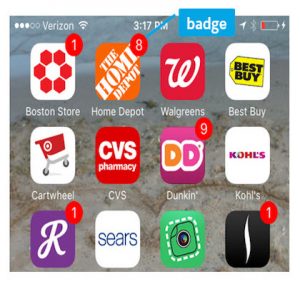- No categories
-
- My Account Subscribe Now | Sign In Log Out
- New York, July 20, 2025

Programmatic display ad spending in the United States is expected to top $22 billion this year, according to eMarketer, with mobile expected to represent 69 percent of the total spend.

Impression metrics can give you an initial sense of confidence in your digital marketing strategy, but you need to go deeper to see the true impact.

There are plenty of obstacles that limit our industry’s potential to drive true innovation, from technology limitations to contract provisions. However, individual and collective mindsets – including the idea of “Well, it’s just the way we do things” – are among the biggest.

While Italy’s top hotels in its favorite cities and exclusive resorts have always commanded premium prices in season, Paris and the French Riviera were always top of the league in overall pricing and appeal for the ultra-high-net-worth traveler.

The size of the global fashion business is growing and is expected to generate double-digit growth between now and 2020, according to a report from McKinsey & Co. McKinsey also claims that the apparel, fashion and luxury sector outperformed the global market over the past decade, exceeding even technology companies.

In-application advertising is currently the fastest growing form of mobile advertising on the market. According to BI Intelligence, United States app-install ad revenue is estimated to grow to more than $7 billion by year-end 2020.

The dirty secret of omnichannel retail – that is, secret to all but the people who suffer it every day – is that the smooth, polished, we’ve-got-it-all-together exterior that retailers present to consumers masks the reality.

It is no secret that banks have concerns that tech giants such as Apple and Google are entering their sectors with mobile wallets and payment solutions.

With recent reports showing luxury fashion spend is down and Burberry recording a recent drop in earnings, Amazon may see an opportunity to shake up a new sector.
When did it start? Ten, 11 or 12 years ago when marketers began, slowly, conceding their driver’s seat to consumers?

Both advertisers and publishers are demanding more transparency in everything they do.

The responsive Web design bandwagon has been rolling on for three-plus years now and, in the face of ever-increasing mobile traffic numbers, it is time to apply some real scrutiny.

Snapchat is a marketer’s dream, with users watching 8 billion videos per day and spending an average of 30 minutes inside the application. With such a prominent influence – ranking as the fastest-growing social network among millennials – there is ample talk about how Snapchat will monetize, especially given its ephemeral nature.

There is no industry where the essential tension of online fraud prevention is more apparent and more pressing than luxury goods.

No omnichannel technology can replace the effect of stellar face-to-face customer experiences provided in stores, where the majority of consumers still do their buying.

Applications that employ push notifications drive more than twice as much usage as apps that do not. App users are your most profitable customers. So it only makes sense to ensure that notifications are both seen and retained.

If you are a marketer or retailer with applications, I have some bad news for you.

Somewhere in that moment of truth between what the customer expects and what your app offers, the ball gets dropped. The experience breaks down and fails to deliver.

Ask the most fashionable people on the street why they buy the designers they do and they will likely struggle to provide a rational reason. That is because it is less about the practical and more about the emotional connections that they have with certain brands, especially when it comes to luxury.

Aside from the aesthetics, what specific functions should an app absolutely include?

Luxury marketers need to look beyond this short, sharp, natural disaster that has beset the United Kingdom’s economy. And in that regard, the impact of Brexit is more nuanced, with pros as well as cons depending on the nature of the luxury business.